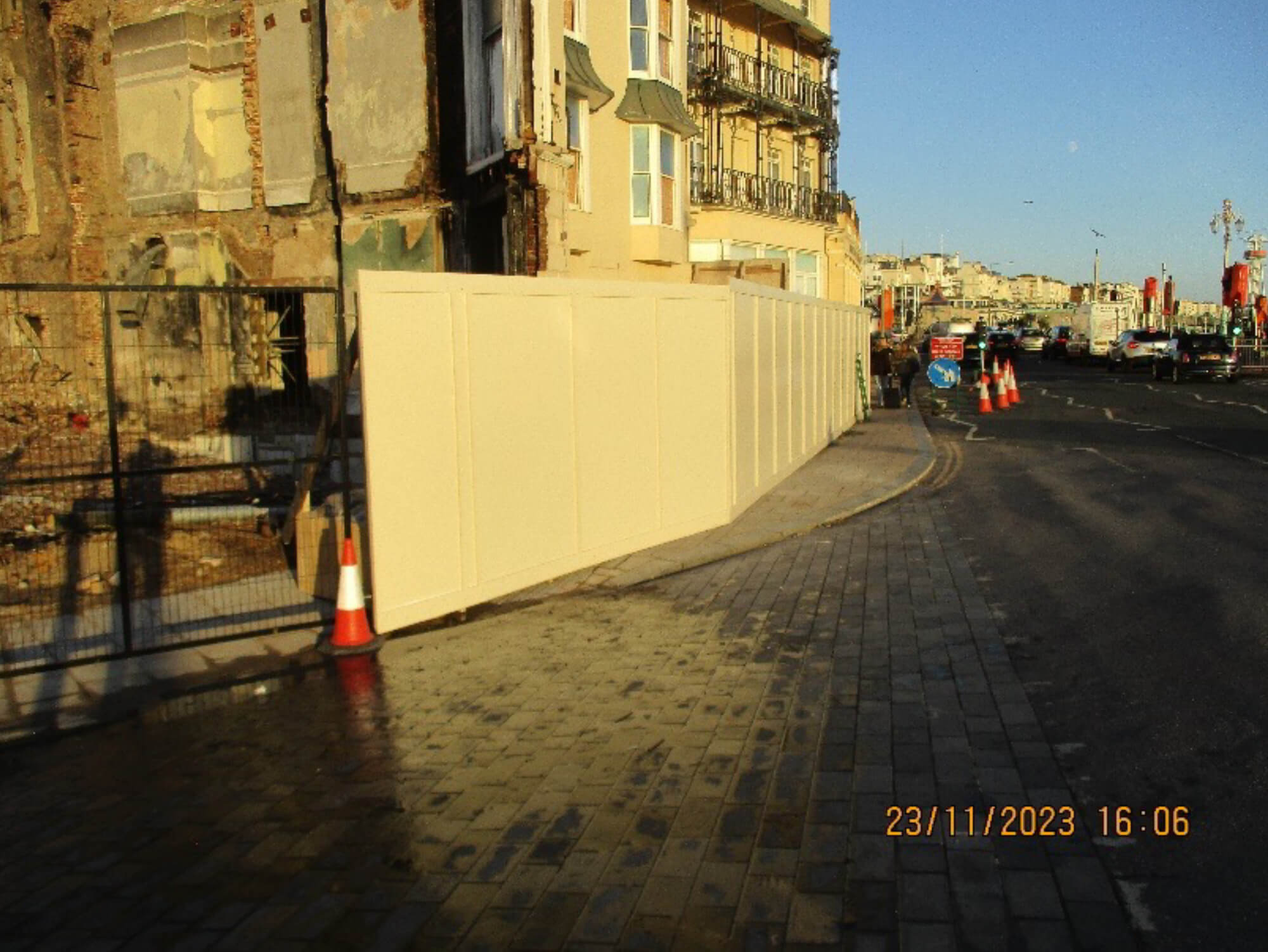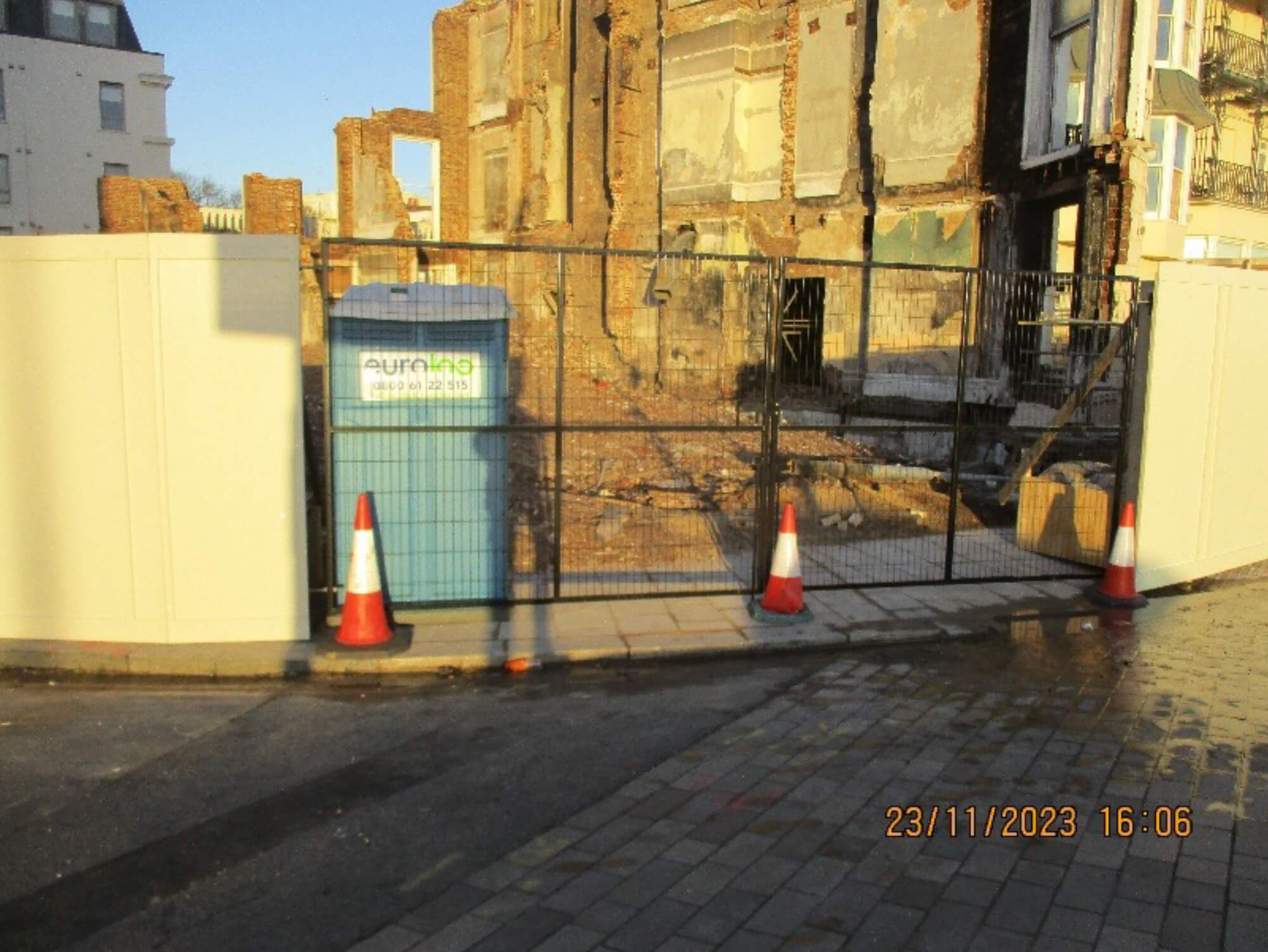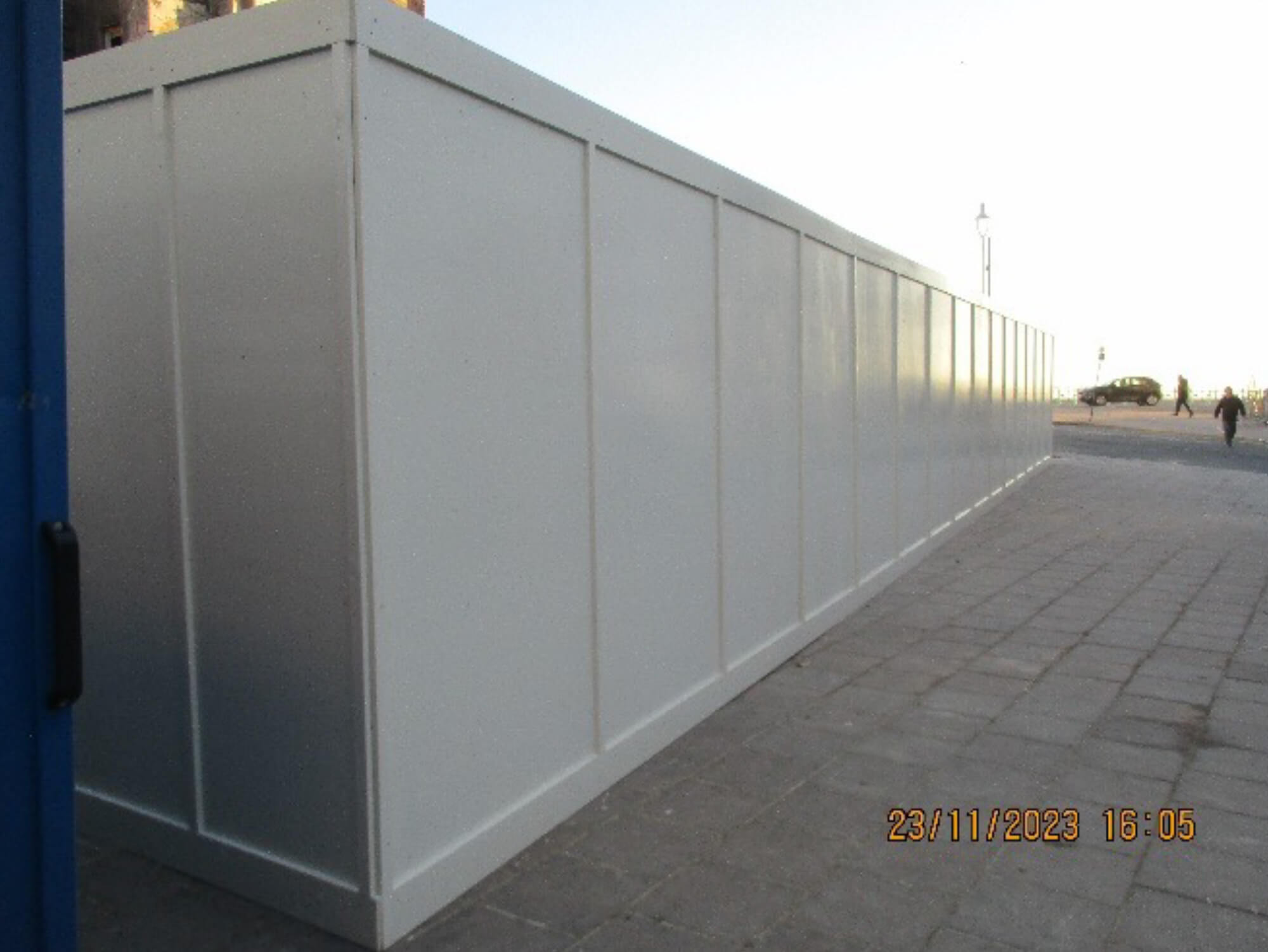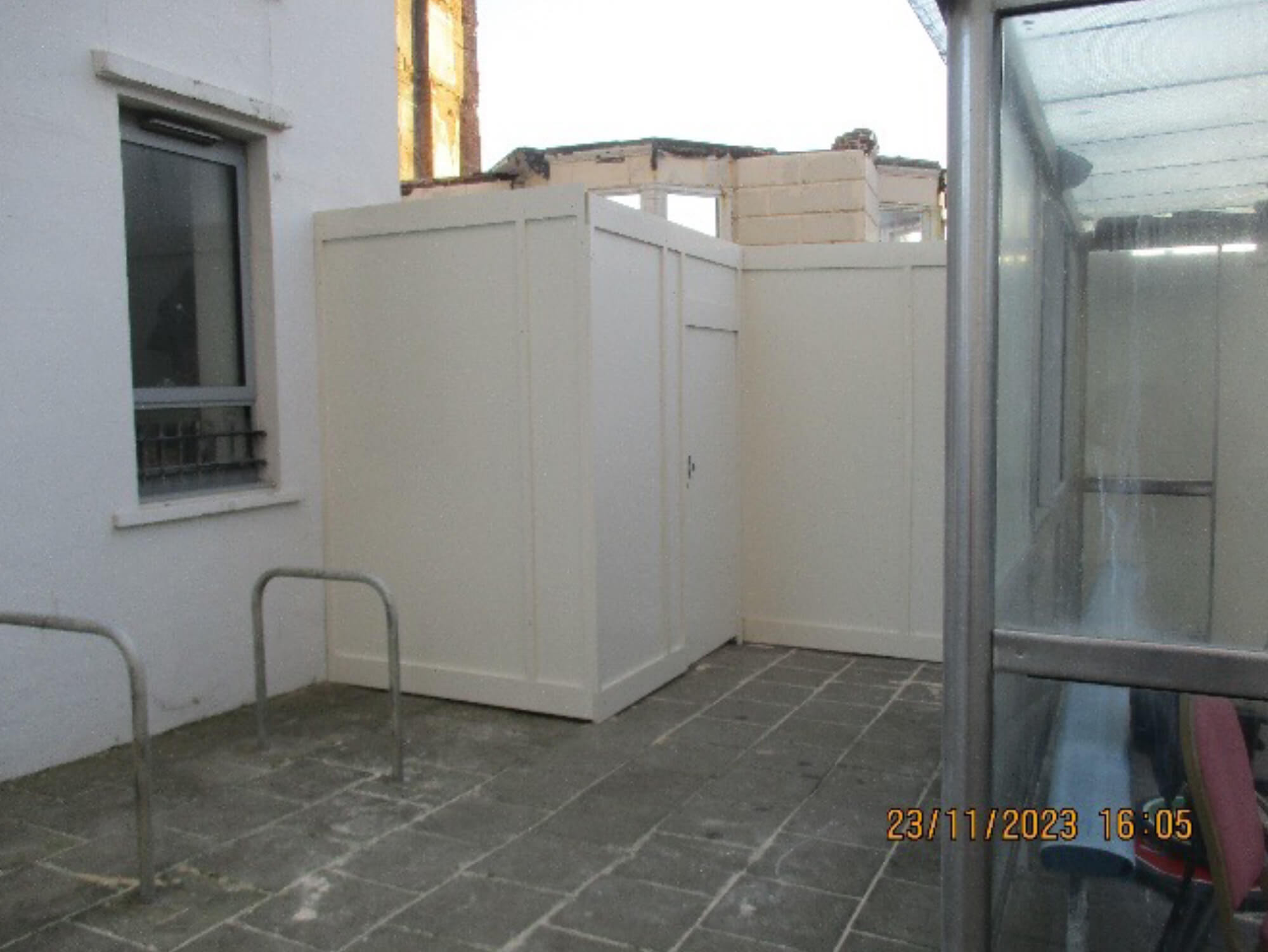35 Old Steine,
Brighton and Hove,
Brighton BN1 1NT
CONTRACT COMPLETION DATE Thursday 23rd November 2023
Demolition & Emergency Safety Works at Royal Albion Hotel, 35 Old Steine, Brighton and Hove, Brighton BN1 1NT
The Royal Albion Hotel on Brighton seafront is a 219-bedroom Regency Style Hotel built in 1826, located on the corner of Old Steine and Kings Road, overlooking Brighton Palace pier. During the twenties and early thirties, the Royal Albion Hotel became the town’s leading hotel where authors, actors, film stars, sportsmen and even the Prince of Wales stayed. The original part of the building, the eastern four-storey wing, is listed at Grade II by English Heritage for its architectural and historical importance. Its western (now central) five storeys extension is listed separately at the lower Grade II. The present western wing was built in 1856 on the site of Williams’s Baths as the Lion Mansion Hotel, and is included on the council’s local list of buildings of special interest.
Royal Albion Hotel, Old Steine, c. 1900: The Albion Hotel opened on 5th August 1823

On 15th July 2023, a fire broke out on the fourth floor on the hotel’s western side. The fire came as thousands of people marched in the city to demand equal rights on the 10th anniversary of Trans Pride Brighton. Firefighters said nobody was injured but people were evacuated from surrounding buildings and the A259 carriageway was closed to all traffic in both directions. Brighton & Hove City Council opened a rest centre to provide support for those evacuated from their homes.
Photos from the scene show the devastation at Royal Albion Hotel











Dorton Demolition & Excavation Limited were appointed to perform the Specified Works as instructed by the Council at daily meetings on site.
Specified Works:
1. UK Power Networks and Southern Gas networks were on site over the weekend and on Monday 17th July 2023 to ensure that that all electrical and gas supply services were isolated and made safe prior to any work progressing.
2. The area around the hotel is securely cordoned off and our on-site dedicated Site Manager continually assesses the risk. 24-hour security is employed to control the site perimeter and access points from unauthorised access by the public.
3. The properties directly behind the Albion Hotel remained inaccessible in the initial weeks due to the risk of falling debris during the demolition process. The area was cordoned off and residents affected by this were rehoused in emergency accommodation as well as provided with contacts to the Brighton & Hove City Council’s housing team for advice and support. Arrangements were made for residents to be escorted on-site to gather their important belongings safely.


4. The H&S plan, mobilisation of demolition plant, equipment, labour, site welfare, perimeter fencing, and 24-hour security, was completed within 48 hours of the fire.
5. Demolition of the severely damaged western part of the building began on 19th July 2023, as this part of the building was no longer structurally safe.
6. Asbestos was known to be in the textured ceiling coatings used in the building. UKAS accredited asbestos air testing was initially undertaken on a daily basis – reassurance, background, and personal, until the loose fire debris was cleaned up to suspect areas.
7. Timber mats were laid on hardstanding areas prior to tracking by demolition rigs to protect the surface and any below ground live services and drainage networks.


8. Protective crash decks boxing was placed over key heritage features, e.g., the lion statue, iron balcony railings, etc., to prevent damage by falling debris.


9. A site meeting is scheduled daily before works begin to establish the methodology for sectional controlled demolition. Micro meetings are arranged every two hours, to agree what is to be carefully salvaged and set aside to preserve for reinstatement.
10. At the end of each day, a debrief is organised. Key items on the agenda are the preservation of architectural heritage features and public and site personnel safety.
11. The building’s instability has made it challenging to assess how long demolition will take. Daily tasks are dynamic and have to factor in frequent collapses, variable weather conditions, as well as preservation of as much of the building as possible. The building had been altered several times in the past, and was around 200 years old, implying that to a degree the building dictated when and where works could start, so it could be left reasonably stable and safe at the end of each working day. A dedicated conservation accredited structural engineer attends the site frequently and as and when required.










12. Public and site personnel safety is a key priority. Site perimeter fencing is continually moved as the works dictate ensuring the site is maintained safe and secure.
13. The Westbound carriageway of the A259 was reopened on 3rd August 2023, which eased traffic congestion. The Eastbound carriageway reopened a fortnight later. Access was restored to the Youth Hostel Association building and the Royal York Building flats on 16th August 2023.
14. The Royal Albion Hotel is in three linked sections, all stylistically similar.
The three parts of the hotel facing south – from right to left: 1826 building; the 1840s extension; and the western wing.


Demolition of the western wing facing south






Demolition of the western wing facing north





Temporary support of the 1840s extension facing south











Scaffold crash decking installations to the 1840s extension facing north




Site at handover.



